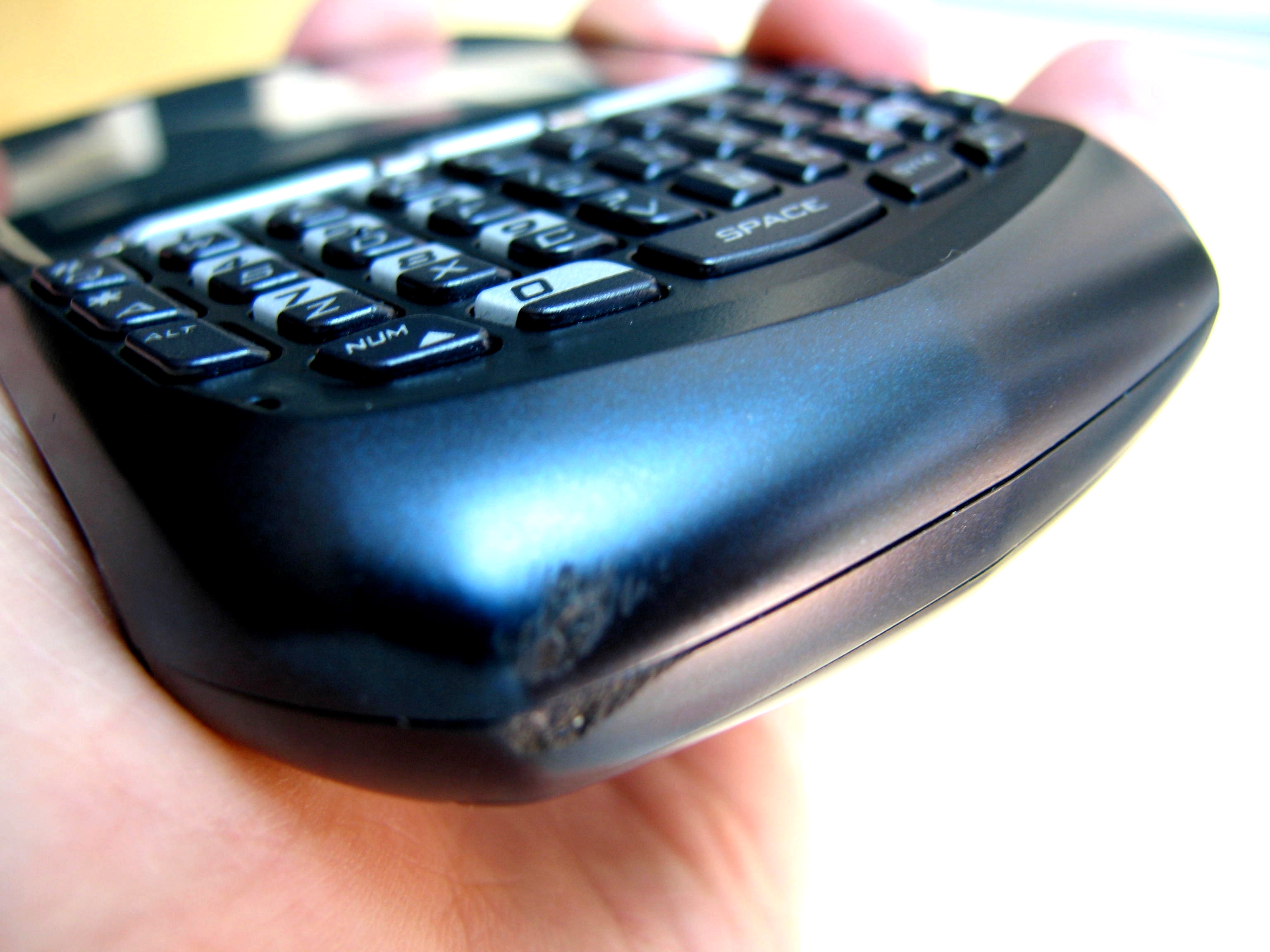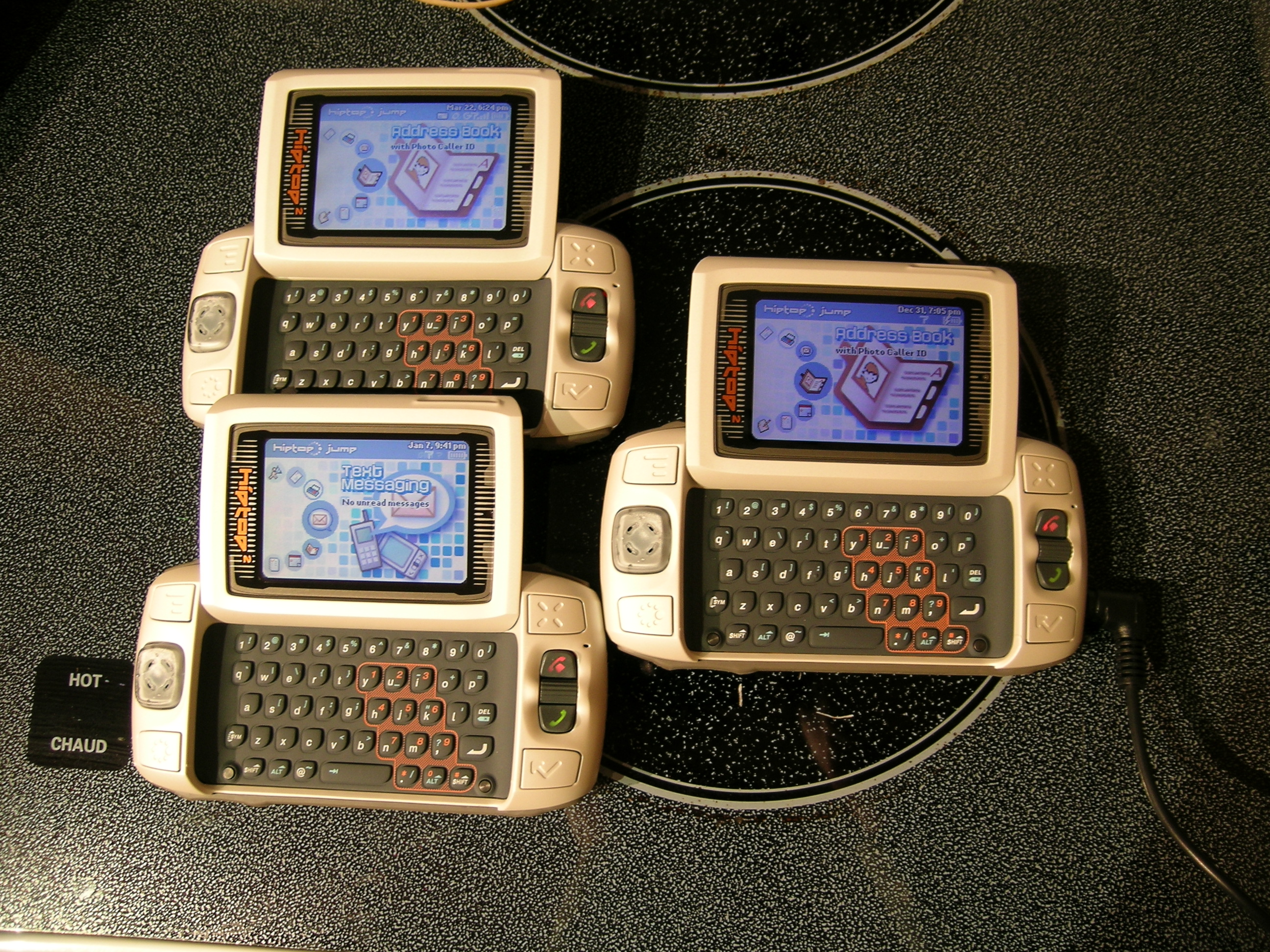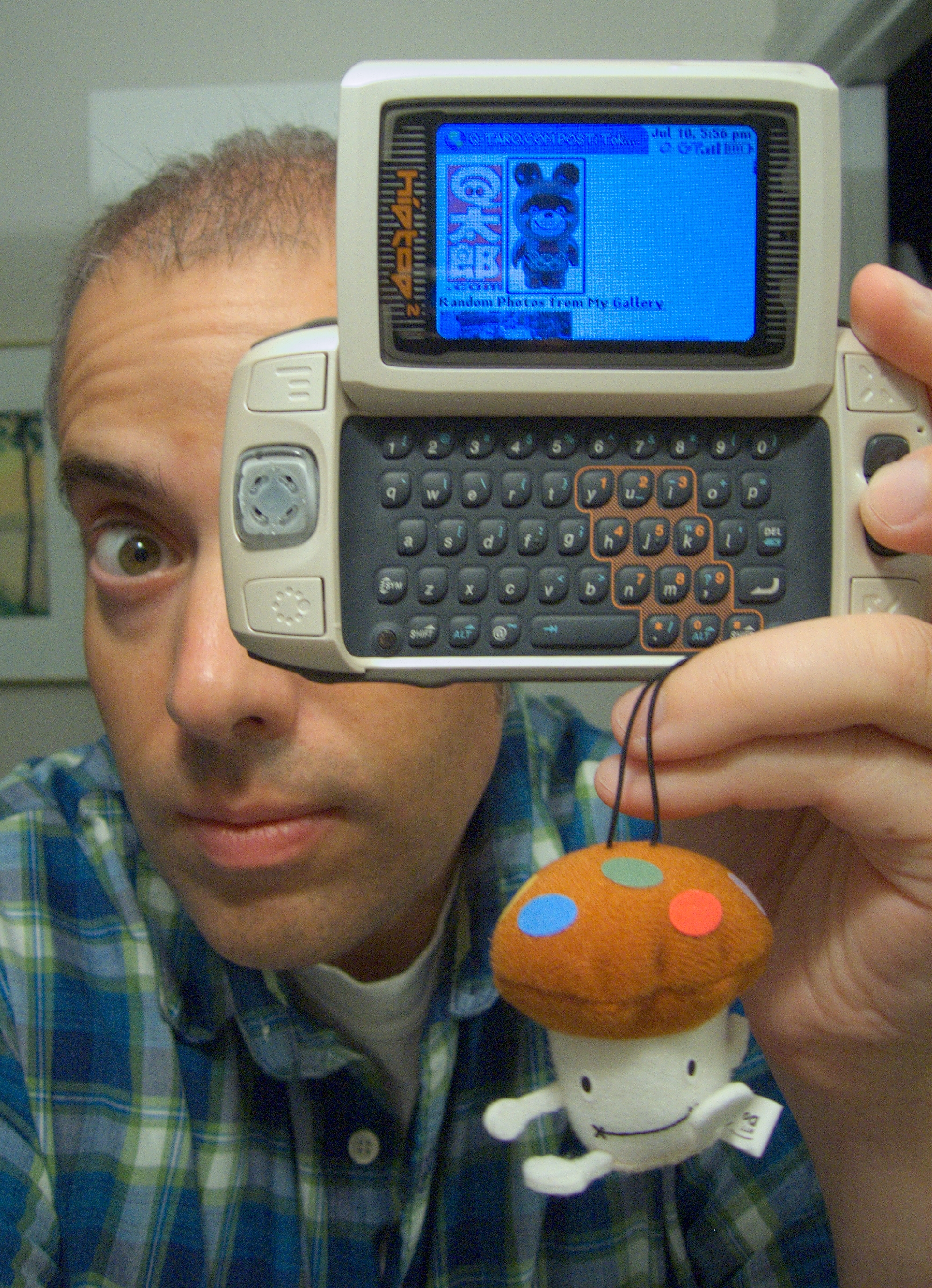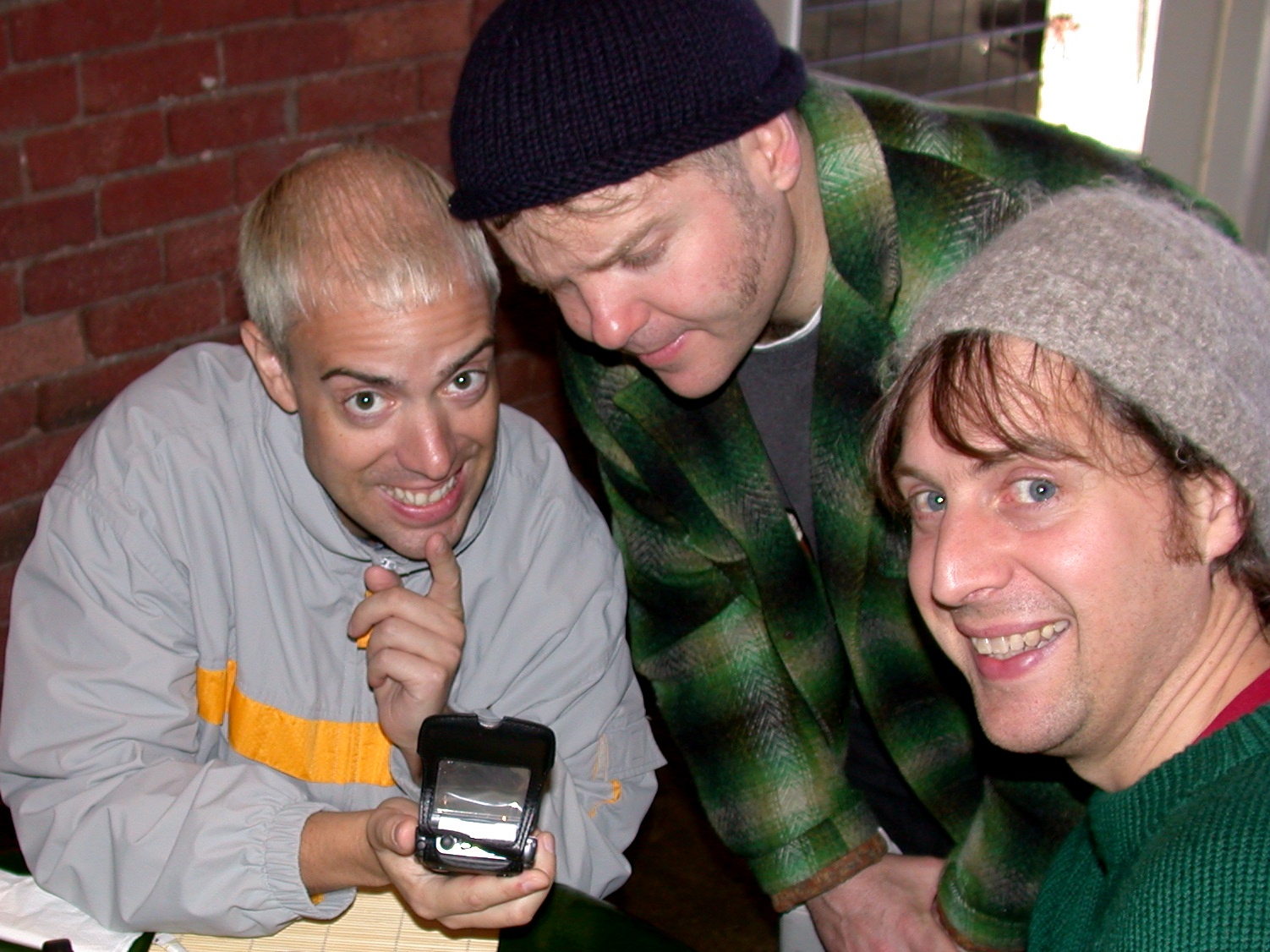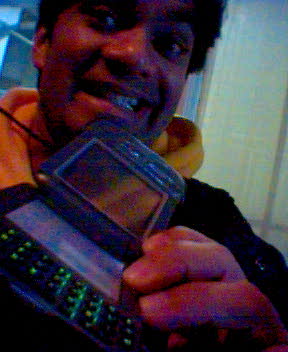Still stinging from the thousand bucks I dropped on my HTC TyTN I turned to eBay for a deal, and managed to find a local seller with an 8700g. It had branding from a carrier in the UK but the radio had been unlocked for use in Canada. I was unsure if the second lock on the device — the BlackBerry PIN — had been cleared, but all fears were allayed when I got the device, powered it up and successfully registered it for BlackBerry Internet Service (BIS).
In many ways, BlackBerries are win-win for carrier and user alike. Just like Danger’s hiptop, BlackBerry data passes through a central server before arriving on your handset. For carriers, this means less congestion on their networks; for users it means faster data — at least it did back in the dark days before the widespread availability of 3G. The BlackBerry operating system had a particularly helpful feature wherein the user could send “service books” to their device. If your email wasn’t working or some other ailment had besieged your handset a binary blob would be sent down the pipe to save the day. I’ve never seen this feature on any other mobile OS.
Though made almost entirely of plastic my CrackBerry was tough as nails; it shrugged off a brutal drop from about chest-high to an unforgiving sidewalk. Chalk this up to its roots as a text-only pager, I guess… And for text-related activities the BlackBerry did very well. Despite the fairly hideous on-screen fonts, dealing with email from multiple accounts was a breeze. Another BlackBerry innovation was the global inbox, a central dumping ground for incoming email, text messages, even missed calls. RIM has since removed SMS from the global inbox by default, which has been a challenge for my older siblings who still don’t entirely get what a text message is, let alone how to send one.
Sadly, any hopes of a CrackBerry addiction for yours truly were vanquished in short order by an absolutely reprehensible app called PocketMac, which RIM licensed as the official syncing software for Apple desktop computers. It routinely ate appointments, contacts and/or to-do items on every sync, and it was a constant game of cat and mouse to suss out what had gone missing. Thankfully OS X now has a proper Desktop Manager, but I’m a proper Linux user now. And to be brutally honest, I don’t think BlackBerry’s proxied Internet is of much use in a world where 3G data is cheap and plentiful. Well, plentiful anyway.
I did use a borrowed BlackBerry Curve many years later on vacation in Bermuda. It was the only way I could get an unlimited data package from the local carrier there. The BlackBerry experience in 2011 wasn’t enough to win me back, but the on-screen fonts were better, at least.
]]>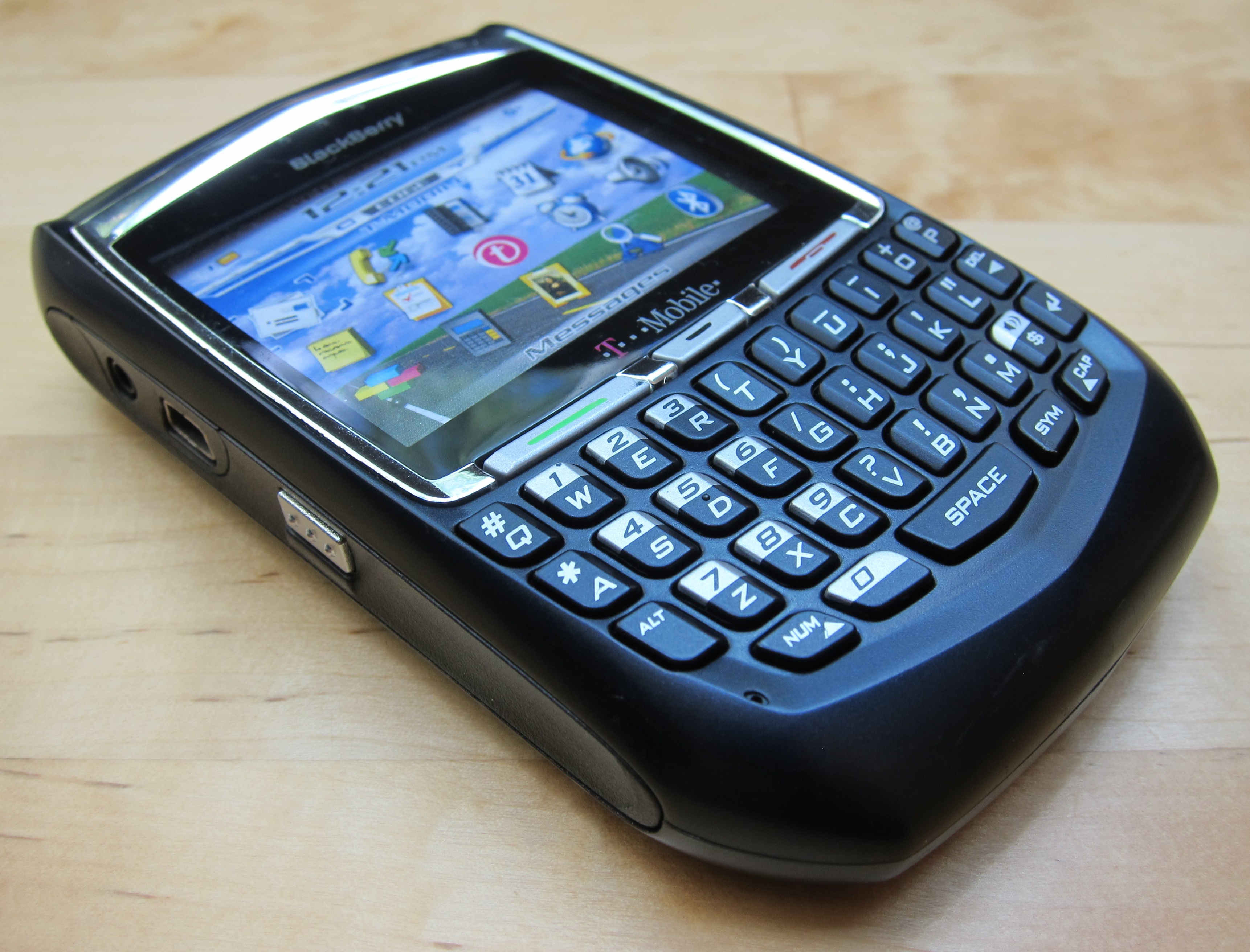
Just like this dummy model I got the non-souvenir, working version of the BlackBerry 8700g via an eBay auction. Mine was made for the UK carrier O2, but all versions of the “Electron” series shared identical specs — quad-band GSM, no camera, great keypad, scrollwheel on the side… The 8700 line had already been on sale for about a year when I started using it in April of 2007, so I was able to test my CrackBerry addiction for a song.
Email was great, the browser seemed okay and BlackBerry Maps was an unexpected treat. But for me the CrackBerry fell flat on its face with PocketMac, the then “official” syncing software for Apple desktop computers. It may be better now, but when I used it PocketMac would eat random appointments, contacts and/or tasks on every sync — far too high a price to pay even for free software.
My CrackBerry also, quite literally, fell on its chin from about waist-high to an unforgiving sidewalk. Some folks quite like having battle scars on their gear; not me, though — I’m vain that way.
If you’d like to read more about my BlackBerry experience I posted three separate entries about it on my personal blog.
]]>The original hiptop didn’t even have a camera; for tiny, blurry photos you had to buy a separate accessory that plugged into (of all things) the headset jack. But its innovative design provided ample room for a near-perfect qwerty keypad. They might well have called this phone the fliptop, as the keys were hidden beneath the screen until needed. To access them you’d simply flip the screen panel out — a combination of magnets and a sturdy hinge would make it pivot a full one hundred and eighty degrees, snapping into the open position with a satisfying click. It never failed to impress, myself included.
The second generation hiptop2 added a built-in 320×240 pixel camera with flash, still fixed-focus and well behind the times but better than nothing. Amazingly, the flip-out screen now sat flush with the rest of the phone when closed; this meant that the keypad was set in a bit deeper than before, but no matter — it was still a joy to use. And navigating the Danger OS was a breeze thanks to four humongous buttons surrounding the screen. Plus a scrollwheel. Plus a four-way directional pad that doubled as the earpiece, of all things!
As great as the hardware was, it wasn’t the hiptop’s stand-out feature. Like BlackBerry’s Internet Service, data on all hiptops was routed through a central server to optimize bandwidth and ease congestion on carriers’ networks. But unlike BlackBerry, Danger’s solution offered two significant advantages for the user. The first was unlimited data — that’s right, all you could eat for a mere twenty Canadian dollars per month. Web browsing, emails with attachments, instant messages… didn’t matter what it was, it was all included. So long as you weren’t roaming internationally you’d never have to pay anything more than the standard monthly fee. Of course, when you were travelling the hiptop was a terrible choice. Data was an all-or-nothing proposition, a hard lesson I learned after racking up over two hundred dollars in roaming charges when I turned my hiptop2 data on over breakfast one morning in the UK.
The persistent Internet connection provided another benefit for hiptop users: with every device came a free web portal where personal data and emails were stored. You didn’t have to worry about syncing data to any one desktop computer; so long as that computer had a web browser you could access everything on your hiptop from there. The portal also featured a webmail client, and since hiptops supported multiple push email accounts you’d need never worry about BlackBerry envy.
The price for all this convenience was learned later, when it was time to get my data off of the hiptop servers. Danger sold a plug-in for Microsoft’s Outlook called Intellisync, which gave me a local copy of my address book on a Windows computer. Photos could be downloaded individually from the hiptop web portal, but calendar entries, notes and to-do items had to be transcribed by hand if I wanted to keep them. And I did.
Danger’s proxied data service was similar in another way to BlackBerry’s BIS: It went down a lot. It happened often enough to be a familiar pain, rendering the device all but useless except for phone calls and SMS. I would always know when the data service came back up; my hiptop would vibrate with a loud grunt as everything on it was restored.
Still, my hiptops were fantastic devices, right up there with the best smartphones I’ve ever had. My hiptop2 was dependable enough to survive two weeks in Uganda in 2005. Though I had no data there I found a way to post short dispatches to my blog via SMS. Part of that trip was a three-day journey to and from the Bwindi Impenetrable National Park to see gorillas in their natural habitat. I can still remember spotting the first cell tower on the long drive back, and firing up my hiptop to let the world know that I was still alive.
That same hiptop was memorable for another, more dubious achievement. It holds the first and so far only breakup text I’ve ever received. Ouch.
]]>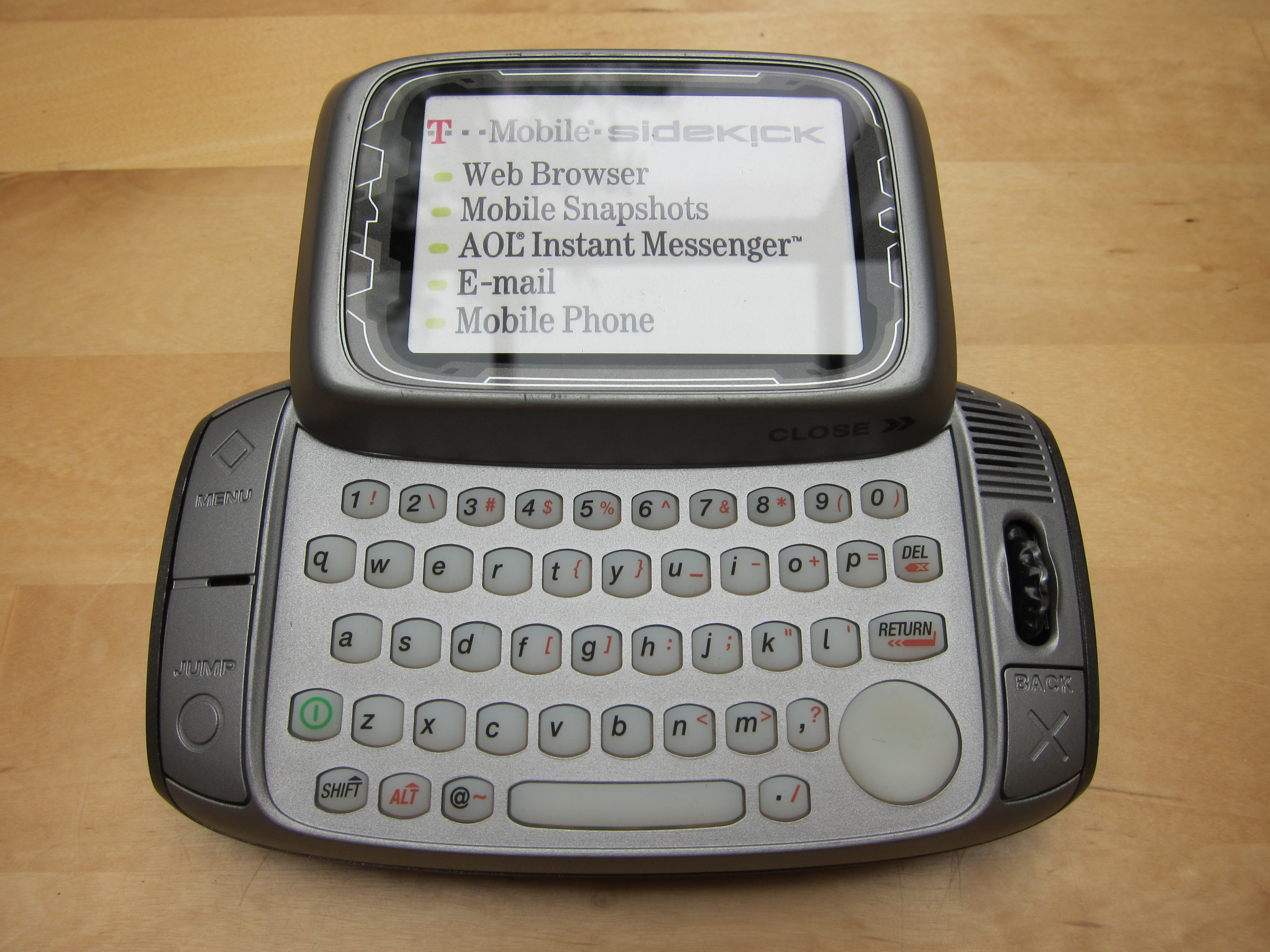
I no longer have my first-generation Danger hiptop, but I do have this T-Mobile dummy model — they call it the Sidekick down south.
Those fat and squishy rubber keys made it just about the best qwerty smartphone ever. The hiptop also had a persistent, proxied connection to the Internet; you can read more about that in the blog entry I posted when I first got one.
Hot stuff! Here are no less than three hiptop2s hanging out on my stove. If I remember correctly I had already upgraded to the second-gen model but wanted a backup device, and due to a screwup at Fido I somehow ended up with one more.
Thanks to its built-in loop I was able to adorn my hiptop with all manner of cell phone charms. This oversized Docomodake was really just for show — ordinarily I’d be sporting a much more tasteful ninja.
And here’s the hiptop that could have been. Fido was all set to start selling the hiptop3, but by then they had been fully assimilated into the evil Rogers empire and the order was cancelled. I can almost hear CEO Ted cackling from the boardroom: “Unlimited data? I don’t think so!”
Shortly thereafter I gave up my hiptop2 and moved on. You can read my requiem for it here.
]]>Sony had already been making their own handsets — at least in the UK — for quite some time. Their join venture with Ericsson was inked in 2001 but the T68i, the combined companies’ first product, took almost two years to arrive in Canada. Its standout feature was an available camera accessory that plugged in to the bottom of the phone.
It was an expensive add-on that I never even bothered with; in fact, this particular phone/PDA combo lasted maybe a week before I sent both back to their respective stores. In theory, using a phone as a Bluetooth modem was a godsend. One could enjoy the mobile Internet on an expansive touch-enabled screen while the signal source was safely tucked away in a pocket. In practice, though, this setup was a pain. A constant Bluetooth connection easily halved the battery life of both devices; your only other choice was to pair and un-pair them manually throughout the day.
I vowed that I would never again separate PDA from phone, and my next device kept me to that promise…
]]>Okay, my GSM-based Treo wasn’t compatible with Japan’s mobile networks, but I could use it pretty much everywhere else. And in 2002-2003 it seemed like I did just that.
By this time I had racked up enough Air Canada points for a free trip to Australia, via Hawaii. I remember being on a bus in Honolulu and firing up the mobile version of MapQuest to verify the location of the Ala Moana Center, where I would enjoy my first-ever serving of Hawaiian poi. Choosing a food court vendor over a touristy hotel restaurant saved me about fifty bucks. Later that trip I would surprise a friend back in Canada with my reply to her innocuous text: “What am I up to? Oh, not much… just having breakfast in Sydney, Australia is all…”
Later that year I was back in Singapore with the The Second City theatre, and amazed our stage manager by pulling up almost-live hockey scores from back home on Yahoo’s mobile sports site. On that same trip I somehow managed to find a cute Singaporean pen pal to flirt with via SMS when I got back home — once we both figured out the country codes, of course. It didn’t last long but while it did it was an amazing thing, sharing random moments from lives on the run from opposite sides of the world. This was all in the days before Twitter, of course.
My Treo was also there for me during tougher times. It allowed me to take diligent notes from doctors as my father lay dying in hospital. During the SARS epidemic, no less. And when a sudden, North America-wide power outage silenced my desktop computer and cordless phones, my Treo persevered. That I could still make calls on it made me quite popular with my neighbours, at least for the duration of the blackout.
The last time my Treo would travel with me was, fittingly, on my last jaunt as an overseas comedian, performing for Canadian troops stationed in Bosnia-Herzegovina. We were already halfway through our two-week USO-style tour — sorry, deployment — when I learned that mobile phones were not allowed on base. Apparently local crime rings had the technology to intercept mobile transmissions, including SMS. But about the only sensitive information I remember sending was that the food was fantastic. Seriously, an army really does travel on its stomach.
My Treo and I had some great times together and it rarely, if ever, let me down. I miss it to this very day.
]]>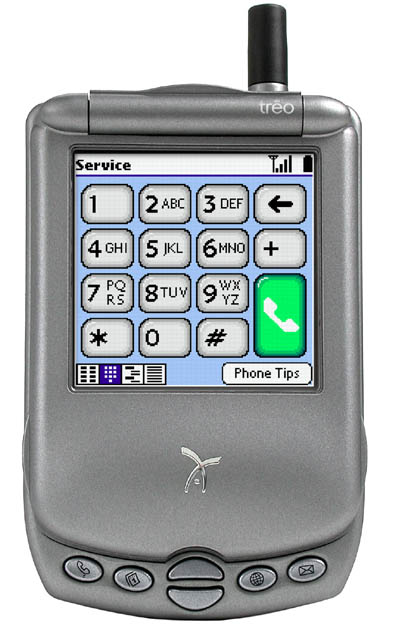
I must admit that gazing upon Handspring’s first colour Treo has me trembling just a little bit… My first smart/world phone was so clearly ahead of its time (in 2002) — in fact, the only other handset that caught my eye that entire year was Nokia’s 7650, which cost twice as much and didn’t work in North America!
And here’s the review that convinced me to buy it.
2002 would prove to be a very good year for travel, and my Treo proved to be an excellent travel companion. Here’s us on Capital Hill, me checking my imaginary wristwatch for a non-existent appointment. G-Men wear polka dots, don’t they?
Here’s us in Melbourne, Australia with comedy duo Scared Weird Little Guys, and a mutual friend back in Canada on speakerphone.
And here’s Ray Deonandan, whom I took pity on when the hinge of his Treo broke. After I sold him mine he broke the hinge on that a month or so later. I’ll never forgive myself for not keeping it…
Relax, the video embedded above isn’t actually ninety-one minutes, more like three and a half. I had forgotten that the 270 didn’t support GPRS when it shipped, making the Treo the lucky recipient of my first-ever firmware upgrade!
]]>When Fido introduced their packet-based GPRS data service they yanked the CSD option at the same time. While the minutes from my calling plan would no longer take a hit from data there was now a data transmission charge, 5¢ per kilobit sent or received. Even on small WAP pages that could add up, and exponentially so if you were roaming abroad and needed valuable information at your fingertips. It should be noted that by this point in my life I didn’t just have a travel bug; a parasitic host had set up a permanent residence, relentlessly steering my career and cash flow towards the next overseas flight and hotel booking. My actor friends couldn’t afford to go or weren’t interested, but the mobile Internet proved to be a dependable and compliant travel companion.
Thus this new pay-per-use mobile Internet simply would not do. I called Fido and threatened to cancel my account — an obvious bluff, since there was no other GSM carrier in Canada at the time. I got to speak to someone in their retentions department, who offered me a $400 handset for $50 if I would stay on with them through the summer. Being the device whore that I am I could hardly say no, and the $400 phone I got was the Nokia 8390.
Like the 3390 before it, the 8390 had Xpress-On covers and could dance. But this newer, smaller Nokia also had a GPRS radio and onboard WAP browser. And yet I was entirely underwhelmed by it, never even gave it a chance, really. Maybe it was the small monochrome screen, maybe it was the constant, painful reminder that the mobile Internet would never again be as cheap as it once was. Whatever the reason… meh. I seem to remember taking it to a bar that was open all night to broadcast a World Cup game from South Korea, but that’s about it. The phone would go up for auction on eBay the very next month.
What replaced it, however, would prove to be quite epic…
]]>“A Bluetooth headset is a great way of letting the world know how much sex you’re not getting.” — someone on the Internet
My comedy shows in Hong Kong were a big success, even though the first one was cancelled (it was a corporate show, not part of our regular run). That cancellation gave us a full week in Hong Kong before our first gig, with nothing to do but take in the sights and shop. We soon found ourselves on the famous Nathan Road in Kowloon, where one of my fellow actors got himself fitted for not one but two custom-tailored suits. And I paid about as much for an Ericsson T39m, my second-ever unlocked phone. I also walked out with a wireless Bluetooth headset as part of the deal, but since such things have never really found favour with those who know better — “douchebag earrings”, I believe they’re called — you won’t read any more about that here. But we will return to Bluetooth in just a bit.
There was nothing particularly wrong with the Fido-branded Ericsson T28w that I’d brought with me from Canada; it was pretty much a one-trick pony, though, offering dual band “world” service and not much else. But the T39m was a different story. Its killer feature was a GPRS data radio, allowing it to connect to the Internet at will, rather than locking down the phone entirely by making a data call via circuit switched data. The difference was akin to a dial-up versus broadband Internet connection on a home computer.
Sadly, like other Ericssons before it the T39m was cursed with a tiny screen, so browsing WAP pages on it was quite pointless. Thus, upon my return to Canada the Ericsson T28w went back to Fido and my T39m went into storage — that is, until the following April (2002), when I became aware of a Bluetooth module for my Handspring Visor. Like infrared, Bluetooth allowed for a connection without wires; unlike infrared Bluetooth was a lot faster and didn’t require line-of-sight for transmission.
Two hundred bucks later I was dismayed to find that the only task this Bluetooth module could accomplish was dial my phone from my PDA. Shortly thereafter the Bluetooth, then cellular radio died entirely. The only explanation I could surmise was that my T39m was made for developing markets, and was not up to the same build standard expected for the west, or even Hong Kong. To put it another way, I was scammed.
But if it sounds like my imported Ericsson was a waste of time it honestly wasn’t. This wouldn’t be the last Ericsson I’d ever own; the Saturday night Hong Kong movies on a local Chinese television station taught me that Ericsson was the brand of choice for discerning mobsters. And the experience of buying mine overseas showed me the freedom that could be gained in using unlocked devices, along with the perils of buying them from sketchy vendors.
]]>